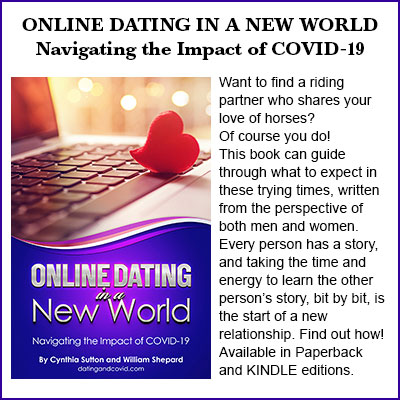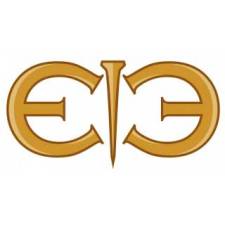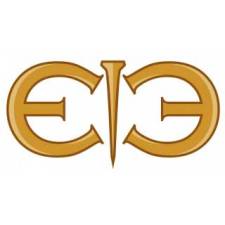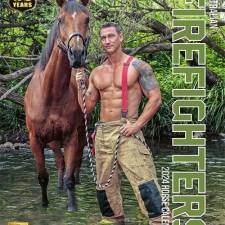
by Marion E. Altieri, for Equine Info Exchange, Oct 2015
If the name Buddy Ebsen brings to mind only two of his characters—Jed Clampett and Barnaby Jones—then you don’t know Ebsen, at all. Or one important part of the legacy the gentleman left behind, in the hearts and actions of three of his beloved equestrian daughters.
Hollywood legend, Buddy Ebsen, got his start in show biz, dancing and singing with his sister in New York City. Soon he found himself tearing up the dance floor and singing for none other than Flo Ziegfield, himself—and from there, to a fat contract with MGM and the great musicals which brightened the otherwise-dreary 1930s.
So you didn’t know that Mr. Ebsen had serious acting, singing and dancing chops—you probably didn’t know that he loved riding horses; owned a ranch in the Santa Monica Mountains; had six daughters—and passed on his love for horses to at least three of his girls.
But these Ebsen women aren’t just any average horse lovers—besides their famous name and love of all things equine—they share the deep-seated need to make the world a better place, for horses and with horses as partners.
Equine Info Exchange caught up with the three sisters, and had the opportunity to hear about their respective organizations and passions.
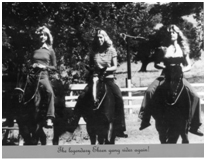
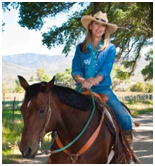
Let’s start with sister Bonnie Ebsen Jackson first. Bonnie is the founder and soul behind T.H.E.Ranch in Skull Valley, Arizona:
BE: “Well, I started T.H.E. Ranch (Teaching Humans with Equine) in 2006 while I was working at a behavioral health clinic. I saw a lot of people in my case management job who weren't getting any therapy—just medication and management. I went through the Equine Specialist certification for EAGALA (Equine Assisted Growth and Learning Association) and began working with a couple of therapists who were associated with Prescott College near where I live in Arizona. Prescott College offers a Masters in Equine-Assisted Counseling as well as Equine-Assisted Experiential Learning. Along with co-facilitating, I began to supply horses from my therapy herd for their intensives and Best Practices conferences and I’ve also taught a Relational Horsemanship undergraduate course there for the past three years. Recently, I added equine-assisted coaching (EAC) to my services through Equine Alchemy, an Epona-based modality. I also have private horsemanship instruction students and some psycho-education groups for women (Sister S’port), female adolescents (Girls Rule), and estranged parents of adult children (Empty Nest).”
EIE: Why horses as vehicles for therapy?
BE: “There is a lot of qualitative research showing the general benefits of animal therapy interactions, especially with horses. Horses are great at being “in the moment” and responding authentically. They don’t hold onto feelings too long because as prey animals they have to be adaptable or perish. For instance, a horse who loses its stable mate might pine and mope for 24 to 48 hours and then, well, life goes on. They are a wonderful model for people who are often stuck in prolonged grief or other debilitating responses to life events. My estranged parent group learn about healthy boundaries and how to maintain them while also working out a peaceful coexistence with their family member, not unlike what happens in a horse herd. In psychotherapy sessions, especially with children, there is often greater ease in focusing on “what’s going on with the horse” (which often mirrors what is going on with the client) than having too much of the focus and scrutiny on the client himself.”

EIE: That’s an amazing amount of information and education, all wrapped up in that one paragraph. And I’m sure it makes readers feel the desire to contact you—or, if they’re not in your region, to find an equine therapist who does similar work. The work you do is so important, and yet—too often, glossed over by “traditional” therapy modalities. Everyone should have access to this kind of therapy—thank you for doing what you do.
What (so far) has been your most rewarding experience?
BE: “Once, I was tasked with taking a seven-year-old boy into the pasture to ‘meet and greet’ the herd before his session began, while his psychotherapist made a phone call. The boy’s father was incarcerated and his mother had recently died of AIDS, so he had come to live locally with an uncle. The boy had gotten into trouble at his new school for acting out aggressively and thus, had been referred for therapy sessions. In the office, the therapist hadn’t yet been able to engage him in any kind of meaningful dialogue about his new situation, his uncle, new school, whatever was on his mind. As we walked around the pasture at my ranch, I pointed out the different horses and we stopped to pet a few of them while they grazed. After some time, the boy’s face softened and, still looking at the animal, he said, ‘Do horses die?’ Then we began to talk about when and how and why horses—and others—die. When the therapist joined us, the boy was able to move into his grief and anger; it had finally surfaced. That session gave me goosebumps and I still don’t quite know how meeting the horses bridged the gap, but it did.”
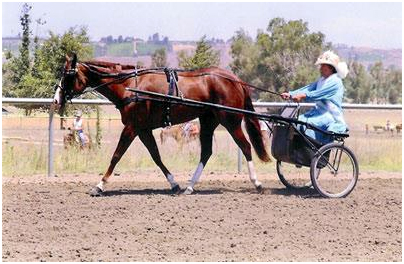
Next, on to sister Cathy Ebsen, northern California and Cathy’s fascinating work with an organization that has two very important Missions. Cathy serves as Executive Assistant for Rancho Del Sueno in northern California. According to the organization’s website, their stated two-fold Mission is as follows:
- To remain dedicated to the preservation and well-being of the Colonial Spanish Horse while educating the public on their unique breed characteristics and historic cultural significance.
(Editorial Note: The Wilbur-Cruce strain of the Spanish Colonial Mission Horse, are the only pure strain, meaning non-feral, direct descendants of the horses Spain brought to the New World. They are the only known “rancher” strain of pure Spanish horses that persists in the southwest making them unique and worthy of preservation.) - To guide individuals to develop healthy, positive life skills and to provide them with education, innovation, and support using equine assisted therapy and equine assisted education models.

EIE: How did you get involved with Rancho del Sueno, Cathy?
CE: “I was familiar with Equine Assisted Learning through my sisters Bonnie and Kiki, and (had) participated in Kiki’s class, ‘Women In The Mornings.’”
“In May of this year, I was contacted by the owner of Rancho Del Sueno, Robin Collins, who was interested in my background and looking for an experienced horsewoman to become the Executive Assistant for the facility. What’s interesting is when I went for the interview, I found out we knew each other as we both showed on the open circuit at the same time; she as a hunter/jumper trainer and I showing in performance events with Jack and Linda Baker. It always is interesting to me how small the horse world really is.”
EIE: When asked about Rancho Del Sueno and its work, Cathy’s warmth and enthusiasm for their dual Mission shone through:
CE: “First of all, Rancho Del Sueno’s programs have been targeted to specific demographics. For example, our Pony Painting class uses Native American symbolism to paint the horse’s body then discuss why certain symbols were chosen. This activity teaches Native American history and could be reinforcement for a Native American youth’s ancestral history.
" Our veterans’ programs can help with problems with relating to their families using some of the Equine Assisted Growth and Learning Association manuals for anger management or marriage. All of our programs use horses as a facilitator. With the participant getting the horse to do specific tasks, they learn how to communicate with the horse and at the same time learn new techniques in communicating with other people in their lives.”
EIE: Your most rewarding experience?
CE: “I have two. Riding my sister Kiki’s horse, Ivanhoe Jody, earning the title of Champion Amateur Trail Horse at Cow Palace in 1975. (And) re-inventing myself, when I was laid off by the corporate structure in 2000, by going to school for web development at the age of 50 and opening my own web development and marketing business Web Services Etc.”
For more information on the great works of Rancho Del Sueno and Cathy Ebsen, please visit the Rancho’s website www.ranchodelsueno.com
One would think that her career as a Singer/Songwriter would keep sister Kiki Ebsen from having time to do anything else of merit. Not so! In 2002, she began rescuing horses and created The Healing Equine Ranch in Calabasas, California.
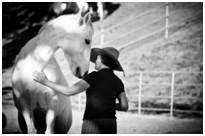
The great work of The Healing Equine Ranch is described thus on their website:
She (Kiki) is passionate about teaching the language of horses while encouraging people to explore themselves emotionally, spiritually and mentally. From ground work to liberty to riding, natural horsemanship skills are weaved into each lesson through a common thread of pressure and release while fine tuning focus, intention and energy. It proves to be a rich equine experience that is sure to excel interested parties in the exciting new world of equine learning. These programs are especially beneficial to those who may have already been drawn to horses, and their natural healing qualities, but need more one on one time.
Kiki and her dedicated team of volunteers have created a lovely environment to unwind, relax and learn.
Our clients include:
Therapists—Teachers—Healers—Students—Equine Enthusiasts—Those who need a dose of Nature—and anyone with a passion towards healing humans with equines. Especially equine based therapists looking for more hands on experience with horses.

EIE: Kiki, please tell us the benefits of these types of programs, for the populations that you serve:
KE: “With my programs, people develop stronger tools to help in their relationships. Better communication and better boundaries is a common result, also learning to be aware of subtle body messages that we give off that mean so much in our daily world. With horses, all of these messages mean something very real to them. It's important that we say what we mean and mean what we say in the way we communicate not only with horses but with people too.”
EIE: Your most rewarding experience?
KE: “There are many. Just recently I had a student do breathing exercises for several minutes. She had come to the lesson with much anxiousness and was quite tense while trying to be strong. The horse and I were keenly aware of it. After just a few minutes she started to cry pretty intensely. It was quite a breakthrough. She clearly needed to express that emotion rather than hold it in. She was grateful for the opportunity to take care of herself emotionally. She and the horse were in harmony for her lesson as she could be fully present. The horses need us to be emotionally, mentally and physically fit before we enter into a dialog with them.”
For more information; to get involved or contribute to the beautiful work of The Healing Equine Ranch, please visit their website: www.thehealingequineranch.com
Three sisters—three hearts—three directions. And yet—those directions are, in essence, the same. We’re certain that the exchange of energy, ideas and passion that must transpire between the sisters contributes spiritually and emotionally to the healing and growth of their human clients, and of their therapy-partner horses, themselves. When three hearts get together, a braid of three strands is created. The ends of the braid may seem to go in different directions, but at the center of that braid is a core that’s so strong, it can never be broken.






